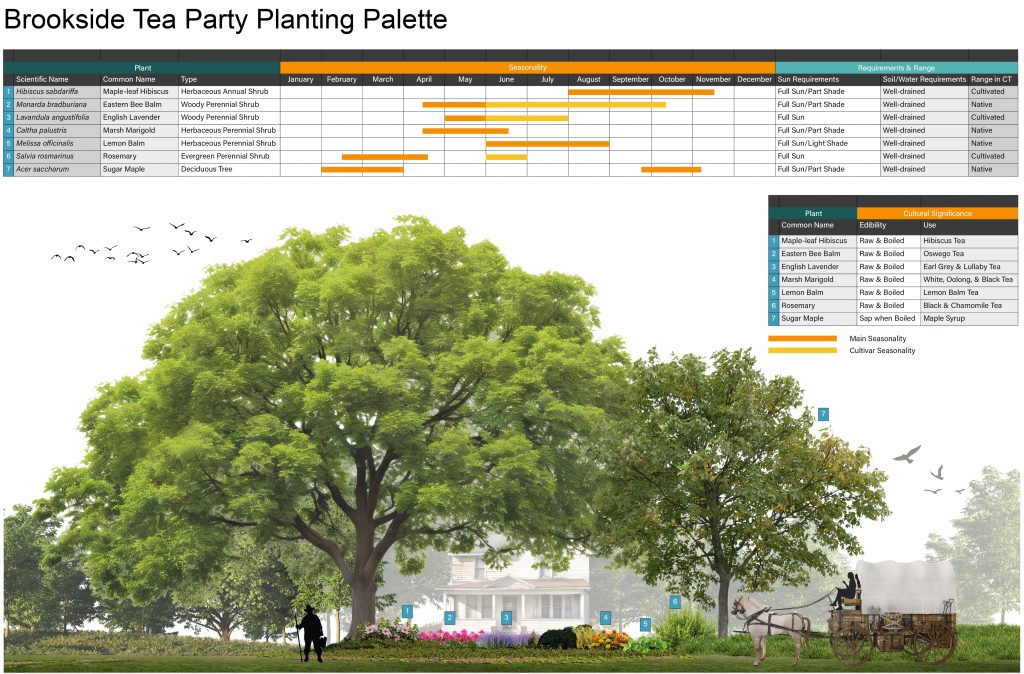UConn Seniors Win Awards for Landscape Architecture Projects
Two students in the UConn landscape architecture program won awards from the Connecticut chapter of the American Society of Landscape Architects (CTASLA) for their community-centered ideas.
Brendan Pugmire ‘25 (CAHNR) and Matthew Bacon ‘25 (CAHNR) were the winners of the 2025 CTASLA Honor Award and Merit Award, respectively.
“It’s very special,” Pugmire says. “It’s very validating to all of the hard work I put into this project to have it recognized at a professional level by my peers.”

Both Pugmire and Bacon developed their projects as part of their junior-year coursework.
“We’re excited and proud of them for achieving these awards, for being recognized,” Jill Desimini, director and associate professor of landscape architecture, says. “We have a growing collaboration with the Connecticut Chapter of the ASLA, and it just highlights the caliber of student work, of teaching, and the types of projects we’ve been able to achieve.”
The landscape architecture program is part of the Department of Plant Science and Landscape Architecture in the College of Agriculture, Health and Natural Resources.
Pugmire’s project titled “Rooted in Time” introduces features to the 180-year-old Brookside Farm in East Lyme to revitalize the site, developed as part of his Design III course with Mariana Fragomeni, assistant professor of landscape architecture.
“The thing about historic restoration is that most projects were not made with modern-day technology and features,” Pugmire says. “So, for me it was about trying to find the happy medium between historic preservation and the modern functionality we see with newer landscapes.”
Pugmire’s design includes an orchard that would revive the farm’s history of growing apples.
It also develops the Brookside Barn into a historical attraction with exhibits of antique farming equipment and other artifacts.
The third element of “Rooted in Time” is a tea garden and kitchen where visitors would pick edible plants like hibiscus, beebalm, and lavender to make fresh teas.
“All of these plants are either native or cultivated,” Pugmire says. “So, they still add to the local ecology.”

The plan for the garden includes plants that would bloom in multiple seasons and trees to offer year-round appeal.
Bacon’s project “Pollinator Pathways” presents a plan to use part of the Northeast Science Quad on the UConn Storrs campus as a biodiverse native pollinator garden.
“I wanted to create something that looked very natural and attracted pollinators,” Bacon says.
This project was completed as part of his Planting Design class with Sohyun Park, associate professor of landscape architecture.
Given that there is a laboratory less than a foot below the ground, this limited what plants Bacon could use in his design. The site is also largely in the shade, leading Bacon to choose native plants that could tolerate both less-than-ideal conditions like indigo, ferns, poppies, and grasses.
Bacon chose specific plants to attract pollinators as well, like milkweed for monarchs, and other plants for hummingbirds, bees, and beetles.
“This is the first project that I’ve done that is this style of planting and really going super in-depth with plant species, so it was cool to get recognition for that,” Bacon says.
The site plan also includes bird houses and “pollinator hotels” for bees, benches, and a rain garden.
Any student or first-year graduate attending UConn or living in Connecticut is eligible to enter the contest. UConn students have won these awards in the past, Desimini says. Developing plans for real-world projects in the community is a cornerstone of the nationally accredited landscape architecture program. It provides students with unique experience that helps them hit the ground running in the job market.
Students can also enter their projects for national awards.
“We hope that this will build the confidence of our students and that more students will apply for awards and recognition in the future,” Desimini says. “We feel really good about their projects and the curriculum.”
This work relates to CAHNR’s Strategic Vision area focused on Fostering Sustainable Landscapes at the Urban-Rural Interface.
Follow UConn CAHNR on social media
Latest UConn Today
- Veteran and Mom Adding New Title to Her Résumé: UConn GraduateThe hard work of being a full-time student while taking care of a family is about to be rewarded
- Neag School Researchers, Alum Honored with AERA AwardsMichael Coyne, Franklin Tuitt, and Bob Pianta ’77 (ED), ’78 MA will receive the awards at the American Educational Research Association’s 2025 Annual Meeting
- ‘Don’t Mess with Mansfield’ Encourages Students and Community Members to Clean Up their TownThis litter cleanup event fosters the growing relationship between students at UConn and the local community while conserving the environment
- Inaugural UConn Hunger SymposiumCongresswoman Jahana Hayes Tours UConn Health’s Husky Harvest Food Pantry
- Nursing and Engineering Innovation Forum Highlights Interdisciplinary Work'Just one conversation can open the door'
- UConn Amplifies Sustainability Message with Spring FlingFrom goat yoga to zero-waste barbecue, spreading the message that sustainability is creative and rewarding













